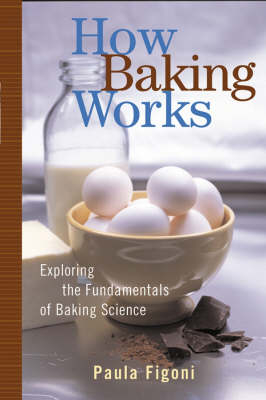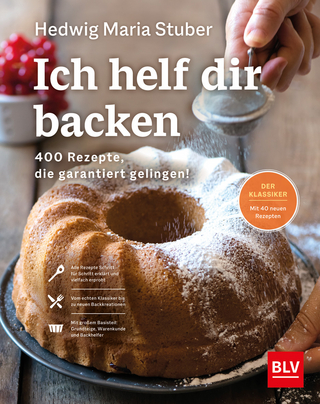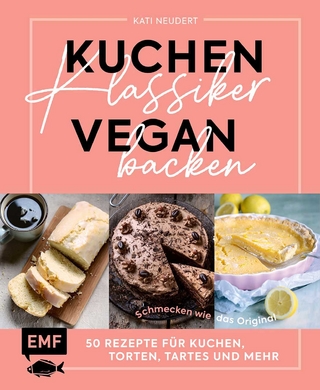
How Baking Works
John Wiley & Sons Inc (Verlag)
978-0-471-26856-7 (ISBN)
- Titel ist leider vergriffen;
keine Neuauflage - Artikel merken
Accessible coverage of the science of baking Underlying the artistic considerations involved in baking is science, and no other text offers as in--depth coverage of the "whys" of baking as How Baking Works. By helping bakers and pastry chefs better understand the major ingredient groups and reactions ingredients undergo during basic baking techniques, this insightful book is an essential key to mastering skills, effectively adapting to today's quickly evolving trends, and understanding a wide array of ingredients from different cultures. In a clear, easy--to--understand format, How Baking Works explains how sweeteners, fats, leavening agents, and other ingredients work, as well as how to apply scientific knowledge to answer such questions as: By doubling the sugar in a pound cake, how does that affect the appearance, flavor, and texture of the end product? Each chapter concludes with helpful review exercises and lab experiments, making this book an engaging learning tool. Complete with dozens of informative illustrations, How Baking Works is a versatile instructional book for students in culinary and baking programs and professional bakers and pastry chefs.
PAULA FIGONI is a food scientist and associate professor in the International Baking and Pastry Institute in the College of Culinary Arts at Johnson and Wales University in Providence, Rhode Island. She also has more than ten years of experience in product development and food science at The Pillsbury Company and Ocean Spray Cranberries, Inc.
Preface.Chapter 1: Introduction to Baking.Introduction.The Importance of Accuracy in the Bakeshop.Balances and Scales.Weight and Volume Measurements.The Difference between Weight Ounces and Fluid Ounces.Baker's Percentages.The Importance of Controlling Ingredient Temperatures.Review Questions.Exercises and Experiments to Try.Chapter 2: Heat Transfer.Introduction.Methods of Heat Transfer.Review Questions.Exercises and Experiments to Try.Chapter 3: Overview of the Baking Process.Introduction.Setting the Stage for Success.Stage I: Mixing.Stage II: Baking.Stage III: Cooling.Review Questions.Exercises and Experiments to Try.Chapter 4: Sensory Properties of Food.Introduction.Appearance.Flavor.Texture.Review Questions.Exercises and Experiments to Try.Chapter 5: Wheat Flour.Introduction.Wheat Kernel.Makeup of Flour.Classifying Wheat.Particle Size.Flour and Dough Additives and Treatments.Commercial Grades of White Flours.Types of Patent Wheat Flours.Other Wheat Flours.Functions of Flour.Storage of Flours.Review Questions.Exercises and Experiments to Try.Chapter 6: Variety Grains and Flours.Introduction.Rye.Corn.Oats.Rice.Buckwheat.Spelt.Soy.Potato.Review Questions.Exercises and Experiments to Try.Chapter 7: Gluten.Introduction.The Unique Nature of Gluten.Determining Gluten Requirements.Controlling Gluten Development.Dough Relaxation.Review Questions.Exercises and Experiments to Try.Chapter 8: Sugar and Other Sweeteners.Introduction.Sweeteners.Dry Crystalline Sugars.Syrups.Specialty Sweeteners.Functions of Sweeteners.Storage and Handling.Review Questions.Exercises and Experiments to Try.Chapter 9: Thickening and Gelling Agents.Introduction.The Process of Thickening and Gelling.Gelatin.Vegetable Gums.Starches.Functions of Thickening and Gelling Agents.Storage and Handling.Review Questions.Exercises and Experiments to Try.Chapter 10: Fats, Oils, and Emulsifiers.Introduction.Chemistry of Fats, Oils, and Emulsifiers.Hydrogenation.Fats and Oils.Functions of Fats, Oils, and Emulsifiers.Storage and Handling.Review Questions.Exercises and Experiments to Try.Chapter 11: Eggs and Egg Products.Introduction.The Makeup of an Egg.Commercial Classification of Shell Eggs.Egg Products.Functions of Eggs.More on Coagulation-Basic Egg Custard.More on Aeration-Meringue.Storage and Handling.Review Questions.Exercises and Experiments to Try.Chapter 12: Milk and Milk Products.Introduction.Common Commercial Processes to Milk and Milk Products.Makeup of Milk.Milk Products.Functions of Milk and Milk Products.Storage and Handling.Review Questions.Exercises and Experiments to Try.Chapter 13: Leavening Agents.Introduction.The Process of Leavening.Leavening Gases.Yeast Fermentation.Chemical Leaveners.Functions of Chemical Leaveners.Storage and Handling.Review Questions.Exercises and Experiments to Try.Chapter 14: Natural and Artificial Flavorings.Introduction.A Brief Review of Flavor.Flavor Profiles.Types of Flavorings.Evaluating New Flavorings.Storage and Handling.Review Questions.Exercises and Experiments to Try.Chapter 15: Fruit and Fruit Products.Introduction.How Fruit Is Purchased.Common Fruits.Fruit Ripening.Storage and Handling.Review Questions.Exercises and Experiments to Try.Chapter 16: Nuts and Seeds.Introduction.Composition of Nuts, Kernels, and Seeds.Cost.Common Nuts, Kernels, and Seeds.Toasting Nuts.Storage and Handling.Review Questions.Exercises and Experiments to Try.Chapter 17: Cocoa and Chocolate Products.Introduction.Makeup of Cocoa Beans.Common Cocoa and Chocolate Products.Handling Chocolate Products.Functions of Cocoa and Chocolate Products.Storage and Handling.Review Questions.Exercises and Experiments to Try.Bibliography.Index.
| Erscheint lt. Verlag | 10.10.2003 |
|---|---|
| Zusatzinfo | bibliography, index |
| Verlagsort | New York |
| Sprache | englisch |
| Maße | 114 x 260 mm |
| Gewicht | 567 g |
| Einbandart | Paperback |
| Themenwelt | Sachbuch/Ratgeber ► Essen / Trinken ► Backen |
| Technik ► Lebensmitteltechnologie | |
| ISBN-10 | 0-471-26856-9 / 0471268569 |
| ISBN-13 | 978-0-471-26856-7 / 9780471268567 |
| Zustand | Neuware |
| Haben Sie eine Frage zum Produkt? |
aus dem Bereich



